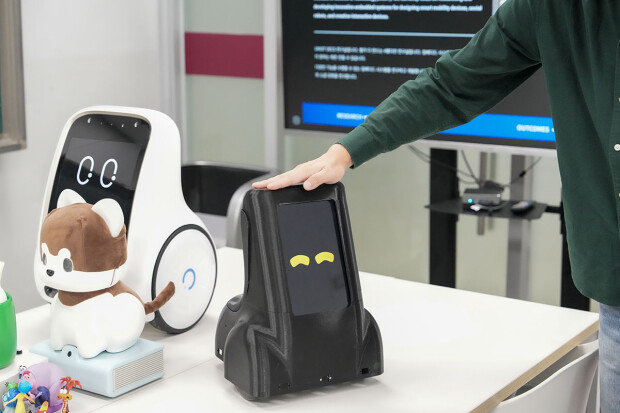Korean scientists create emotion-adaptive robot
Korean scientists create emotion-adaptive robot
Posted June. 09, 2025 08:16,
Updated June. 09, 2025 08:16

A South Korean research team has developed an emotion-adaptive robot that changes its behavior, such as widening its eyes or stepping back, based on the intensity and frequency of external stimuli.
Ulsan National Institute of Science and Technology announced on June 8 that Professor Lee Hee-seung’s design team developed a robot capable of expressing six distinct emotions through changes in eye shape, color and movement. For example, when the robot is tapped forcefully, its eyes enlarge and it leans backward to show surprise. However, repeated stimulation does not produce the same reaction. Instead, the robot’s response changes based on its cumulative emotional state and prior interactions.
The researchers treated emotions as dynamic vectors that change over time instead of fixed states. Their control model enables strong stimuli to rapidly increase emotional intensity, while weaker inputs gradually adjust the robot’s responses. In user tests, over 80% of participants described the robot’s emotional expressions as natural and lifelike.
Professor Lee said previous robots responded with preset reactions to stimuli, but their adaptive model captures the flow of emotional change. He added that this technology could be used in human-centered robots, including companion devices.
최지원 jwchoi@donga.com



![싱크대에 끓는 물 부어 청소? 수리비 폭탄 맞는다 [알쓸톡]](https://dimg.donga.com/c/138/175/90/1/wps/NEWS/IMAGE/2025/12/10/132935996.3.jpg)
![“양말 버릴 필요 없다”..수명 늘리는 가성비 甲 루틴 3단계 [알쓸톡]](https://dimg.donga.com/c/138/175/90/1/wps/NEWS/IMAGE/2025/12/09/132929830.3.jpg)

![물줄기 확 세진다…샤워기 30분만에 복원하는 방법 [알쓸톡]](https://dimg.donga.com/c/138/175/90/1/wps/NEWS/IMAGE/2025/12/08/132919854.3.jpg)
